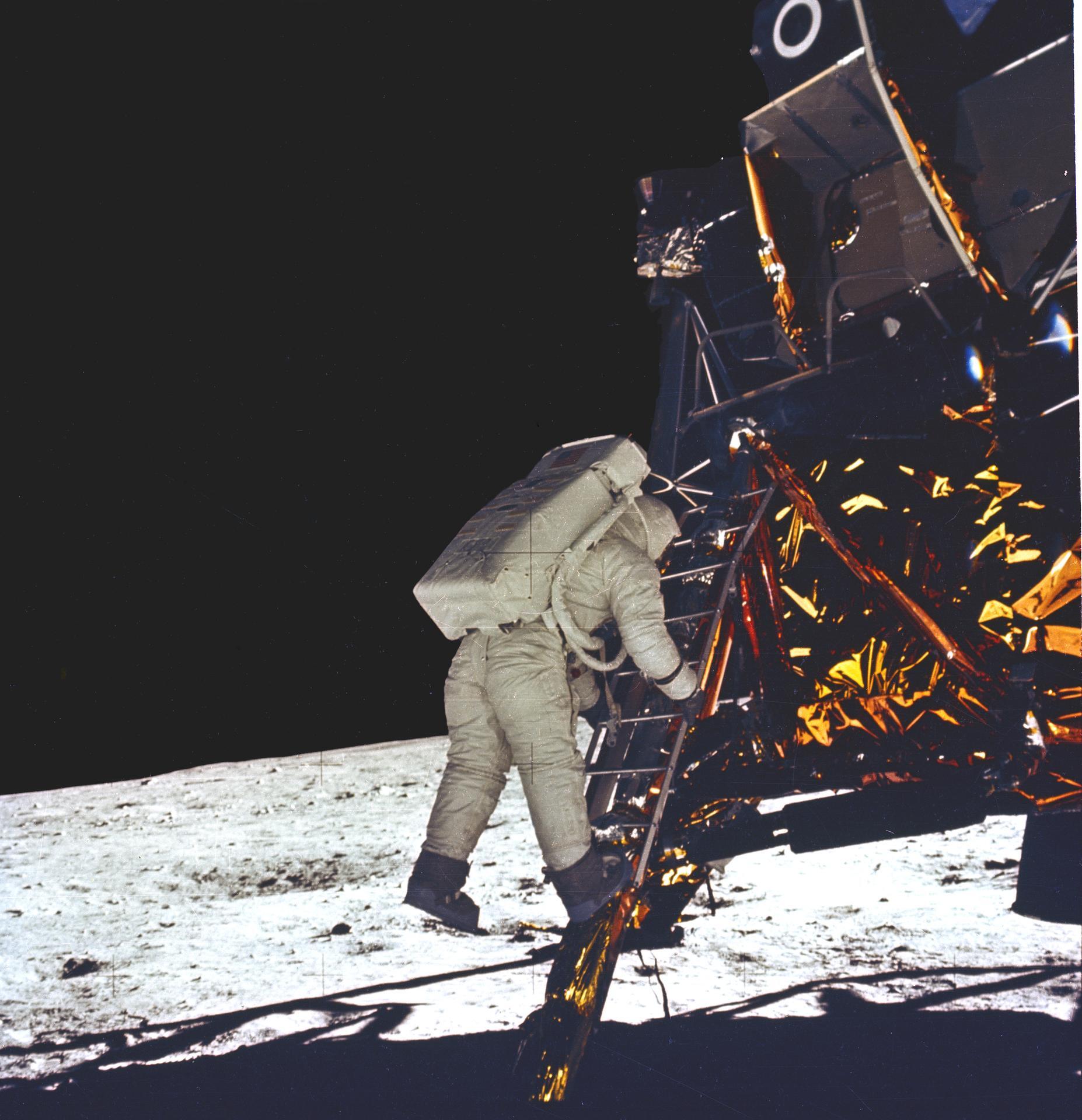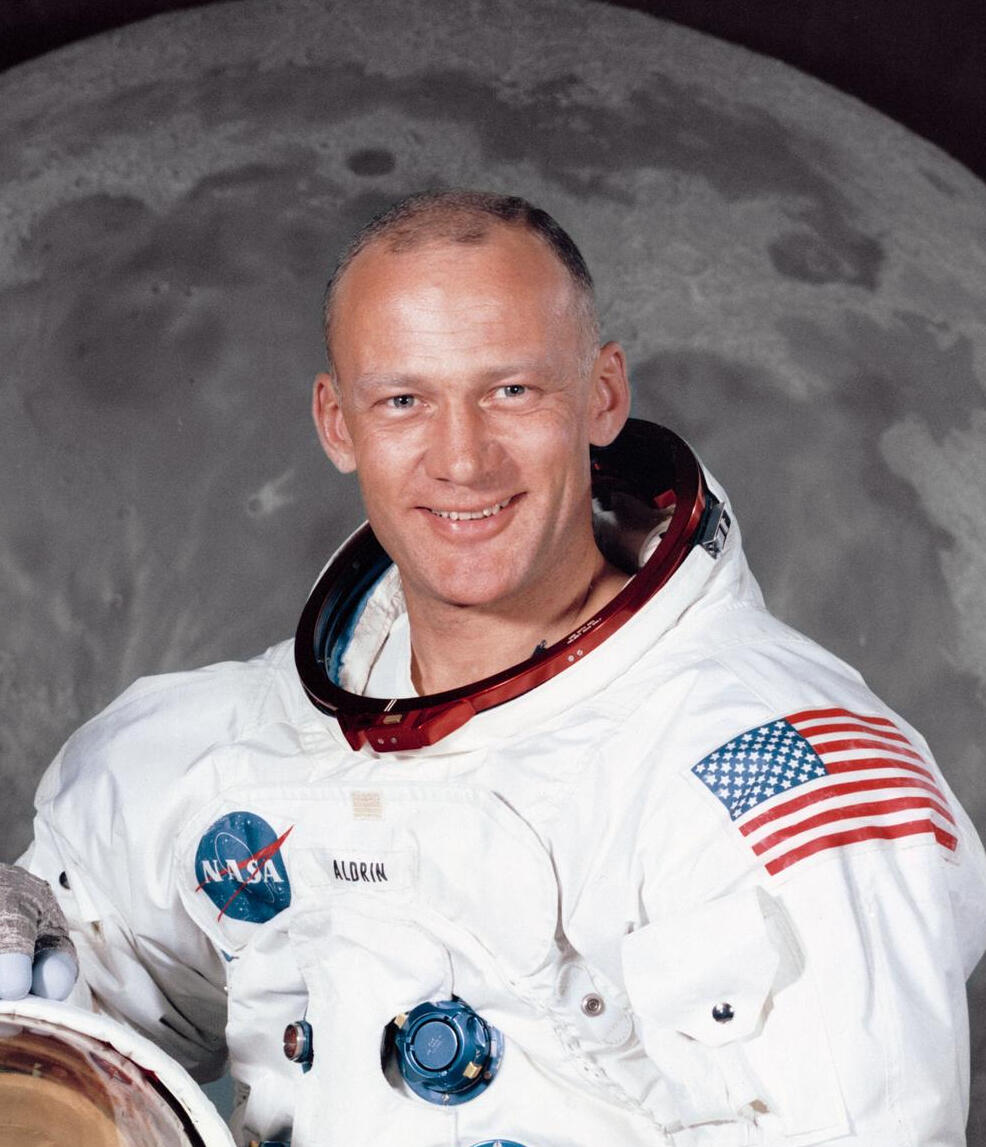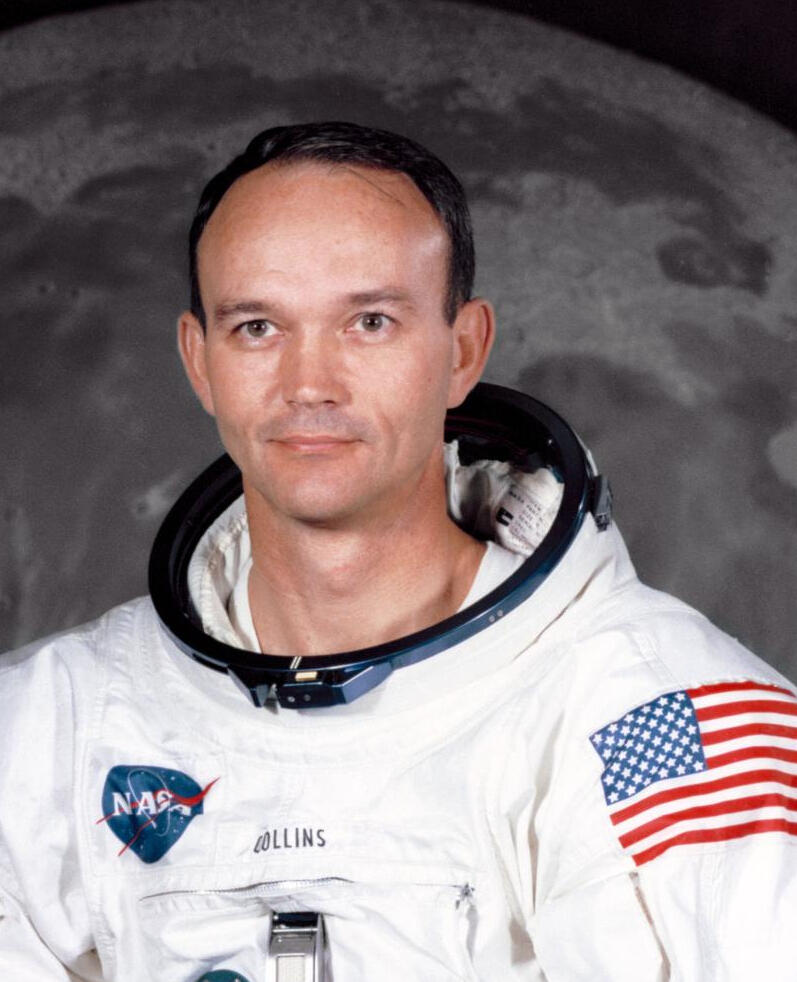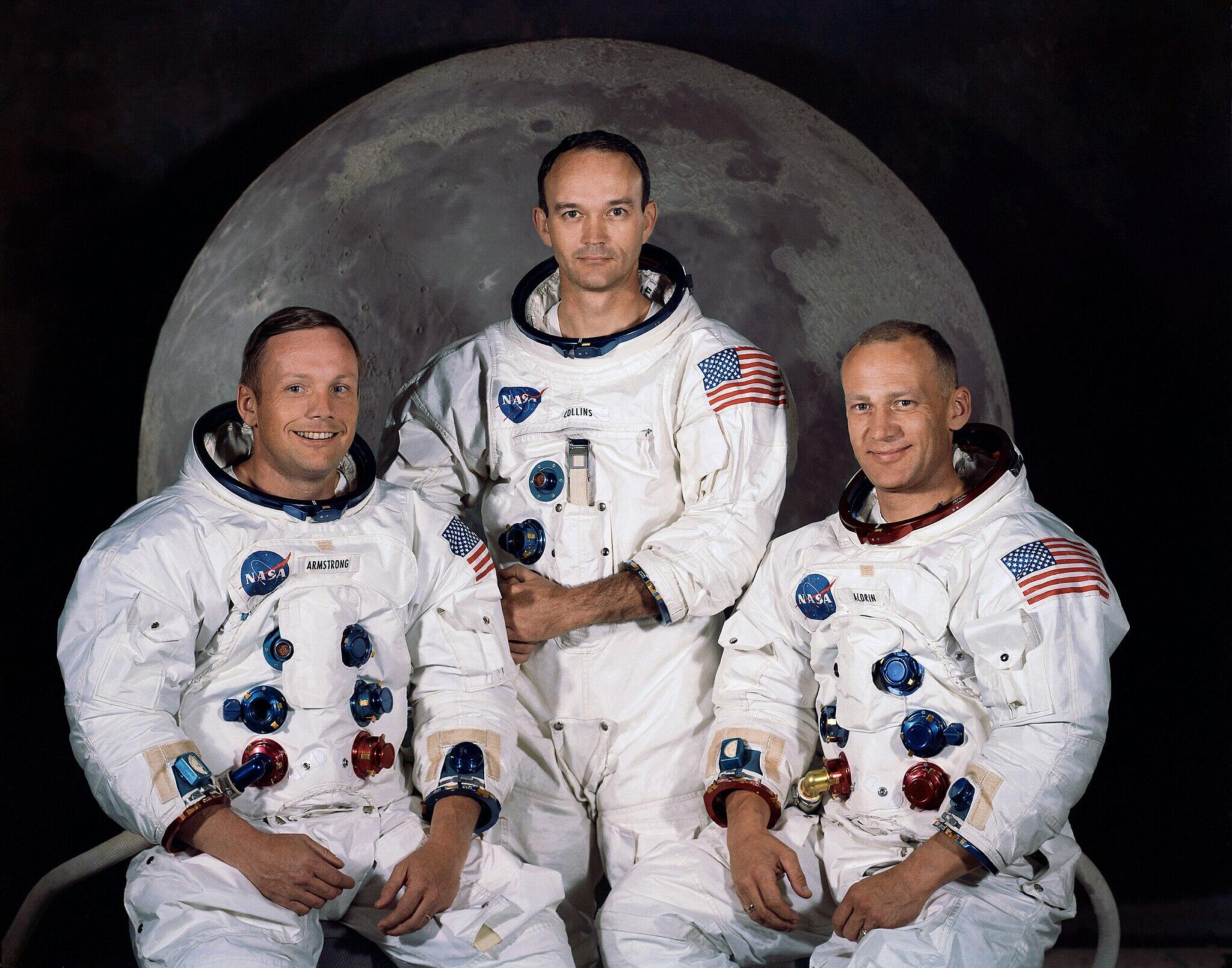The Apollo missions were part of an ambitious national goal, first set by President Eisenhower in 1958 and then taken over by President Kennedy, to send an American man to the moon before 1970. In 1969, that goal was achieved with the Apollo 11 mission. Learn more about the circumstances surrounding the Apollo 11 mission and what the astronauts did on the first successful moon landing!

A Brief History of Space Exploration Before 1969
The Space Race was one facet of how the US and the Soviet Union “fought” with one another during the Cold War. In lieu of actual battle, both countries began investing heavily in things like arms, including nuclear technology, and espionage and counter-espionage.
A natural progression was to try to outdo one another in the final frontier: space.
We choose to go to the moon in this decade and do the other things, not because they are easy, but because they are hard.
President John F. Kennedy (1962)
Early Space Technology
From 1949 to 1955, the US launched a series of rockets known as Viking to gather atmospheric data and experiment with rocket technology. In total, 12 Viking rockets were launched, with several of them successfully reaching atmospheric elevation and gathering valuable data.
In 1950, utilizing the Viking data, the US created the US National Science Foundation. In a few short years, the US determined that it was possible to invent the technology required to send a satellite to space, and in July 1955, it was announced that the US intended to do just that.
Not missing a beat, the Soviet Union announced the same intentions just a few days later.
On October 4, 1957, Russia launched Sputnik, the first artificial satellite; the Soviets had won the first leg of the Space Race.

However, the news was underreported in the US as domestically, President Eisenhower was dealing with issues regarding the Civil Rights Movement that demanded his and the nation’s attention instead.
Psychology in World Politics
The USSR’s success in being the first nation to launch a satellite caused the US to be at a disadvantage in psychological world politics. It made Americans fearful of the USSR’s technological superiority (especially with the implication it could be used for weaponry) and demoralized about the state of the US’s own technology, which was supposed to be the best in the world.
To catch up, the first US satellite, Explorer I, was launched in 1958. Later that same year, the National Aeronautics and Space Administration (NASA) was created.
President Eisenhower established NASA in 1958.
The Race to Space
Now that both nations had made the first step, rapid progress came from both ends. The USSR sent the first space probe to the moon in 1959 and the first person by May 1961, winning the second leg of the race. The US was not far behind, sending the first American to space on May 5 that same year.
This was a tipping point for then-President Kennedy, who in 1961 declared the US would commit to sending a man to the moon before 1970. In 1962, the first American orbited the Earth (John Glenn), setting the stage for the Apollo program to begin.
After many years of development and setbacks, including a deadly fire on Apollo 1, Apollo 8 launched in 1968 which was the first manned mission to orbit the moon; the US had won this part of the race. The next year, Apollo 11 made it to the moon, sealing the US’s place as the first nation to send a person to the moon and back.

About the Apollo 11 Mission
The Apollo program as a whole began in the 1960s. After the failure of the first Apollo vessel (1967), and the non-notability of the vessels that were designated Apollo 2 and Apollo 3, Apollo 4, Apollo 5, and Apollo 6 were successful tests that would be used to develop spacecraft that would be safe for astronauts. These missions were uncrewed to avoid more fatalities while more testing was done.
Apollo 7 (1968) was the first Apollo mission to get to space and carried 3 crew members. Apollo 8 (1968) became the first manned flight to orbit the moon. Apollo 9 (1969) prepared the program for the moon landing by testing the success of operating with a separated lunar module and conducting a spacewalk, and then re-docking the lunar module.
Apollo 10 (1969) was a dress rehearsal for Apollo 11 where the crew tested all aspects of the mission, including calculating how long to get to the moon. The only part missing was the moon landing!
Finally, it was time for the Apollo 11 mission.
July 16, 1969
July 20, 1969
July 24, 1969
On July 16, 1969, the crew boarded the space craft and blasted off, aiming for the atmosphere. On July 19th, the craft made its way into lunar orbit and flew behind the moon for the first time, putting the craft and crew out of contact with Earth for a short time.
On July 20th, at about 100 hours into the flight mission, Aldrin and Armstrong entered the Eagle (lunar module) and undocked from Columbia (the command and service module aka CSM). Astronaut Michael Collins stayed behind to man the CSM.

They then began to make a slow descent to the moon’s surface, all while still orbiting at a rapid pace.
Using rockets to slow their orbiting speed, the Eagle landed in almost the exact intended spot on the moon’s surface, in the Sea of Tranquility, about 3 days, 3 hours, and 49 minutes after launch.
At 4:17 PM EDT that day, Armstrong radioed home base to say “The Eagle has landed.”
After about 4 hours of preparation, Armstrong emerged from the LM with a TV camera and started transmitting the video to Earth. Then, he stepped onto the moon, the first person ever to walk on a different celestial body.
Aldrin joined him about 20 minutes later. The camera was then positioned on a tripod to document their activities, and President Nixon was able to speak to the two astronauts via a telephone link.
The two astronauts set up various devices to measure different data, like a solar wind monitor and a seismometer. They also collected about 50 lbs of rock and soil samples to take back to Earth, as well as many photos.
After spending more than 21 hours on the moon’s surface, including a 7 hour period of rest, the pair began ascending the Eagle back into lunar orbit to meet up with Columbia. They successfully docked and began the trip back to Earth.
195 hours, 18 minutes, and 35 seconds after launch, Apollo 11 safely splashed down in the Pacific Ocean - the mission was a total success!
They left behind a few tokens on the lunar surface including an American flag and medallions with the names of the 3 astronauts who died in the Apollo 1 accident, as well as the names of 2 USSR cosmonauts who also died in the line of duty.
They also left a small silicon disk with micro-messages of goodwill from 73 countries and the names of NASA leaders.

Upon return, all three astronauts were quarantined for 21 days to ensure they recovered from space travel well and to monitor for any diseases that could have been contracted on the moon.
It took Apollo 11 75 hours and 50 minutes (a little over 3 days) to reach the moon's surface.
The spacecraft had been in the moon's orbit for some time before that, but due to the maneuvers required to touch down safely, it took longer to finally land.
After Apollo 11
After the successful moon landing, the fervor for space technology subsided substantially. It was extremely costly to have reached the success of Apollo 11 and simply couldn’t be funded at that rate anymore. The Space Race was over, the “superior” country had been determined, and while NASA remained active, it was far less vigorous.
The USSR also defunded its space program in the years after Apollo, eventually retiring it completely.
But, before the space program in the US died down, several more Apollo missions followed. Apollo 12 launched at the end of 1969 and became the second successful moon landing. Apollo 13 (1970) would have been a moon landing mission, but an onboard explosion made them abandon the mission early; everyone returned to Earth safely.

Apollo 14 (1971) was the most successful moon landing mission. Astronaut Alan Shepherd, who had been the first American to go to space aboard the Mercury Freedom 7 in 1961, set the record for longest distance walked on the moon. Apollo 15 (1971) was also very successful. It was the first time humans drove a vehicle on the moon.
Apollo 16 (1972), another success, allowed astronauts to collect over 200 lbs of samples.
The final mission, Apollo 17 (1972) was another grand success. Astronauts were able to complete three moonwalks and gather another 200+ lbs of samples.

Who Were the Astronauts on Apollo 11?
The Apollo missions were coordinated and made possible because of the dedication of hundreds of people. Beyond astronauts, entire teams of people are required to pull a literally astronomical feat like putting people on the moon. Engineers, mechanics, logistics teams, mission control teams, and many others all deserve acknowledgment for their hard work!
But, of course, the most interesting people involved in Apollo 11 are the astronauts.
Neil Armstrong - Commander
Armstrong was born on August 5, 1930, in Ohio. He first became interested in aviation at age 6 when he took his first airplane ride. At age 16, he became a licensed pilot, then a naval air cadet. He served in the Korean War in 1950, which interrupted his aeronautical engineering studies at Perdue.

He went on to finish his degree in 1955 and immediately joined the National Advisory Committee for Aeronautics (NACA), the predecessor of NASA. He joined NASA’s space program in 1962 and began astronaut training. He was an exceptional command pilot and an obvious choice for a mission. Obviously, he commanded the successful Apollo 11 mission in 1969. On his return, he was awarded the Presidential Medal of Freedom.
Afterward, Armstrong retired from NASA in 1971, opting to further his professional and academic pursuits instead of becoming a public figure. He taught at the University of Cincinnati from 1971 to 1979 and was involved in many air and space technology companies until 2002. In 1978, he received the Congressional Space Medal of Honor.
In 1986, he was part of the Presidential Commission on the Space Shuttle Challenger Accident, tasked with analyzing the safety failures in the Challenger Disaster, which was a catastrophic event that caused national mourning.
In 2009, he received the Congressional Gold Medal.
He passed away in 2012 at age 82.
Armstrong had prepared his famous statement in advance, but whether the excitement of the moment caused him to forget one word or there was a technological glitch, the historic quote we all know contains a verbal typo:
That’s one small step for [a] man, one giant leap for mankind.
Neil Armstrong
Edwin E. “Buzz” Aldrin Jr. - Lunar Module Pilot
Buzz Aldrin was born on January 20, 1930, in New Jersey. As a child, his father was a colonel in the Air Force who had previously studied under Robert Goddard, the father of rocker propulsion. So, like Armstrong, he had a gravitation to aviation early on.
He pursued the sciences in school, earning his bachelor of science in 1951 from the United States Military Academy. Afterward, in 1963, he pursued a doctorate in Astronautics from MIT in Cambridge, MA. His dissertation was titled “Line-of-sight guidance techniques for manned orbital rendezvous,” and no doubt helped secure his place in NASA’s astronaut training program later that same year; he was the only astronaut with a PhD.
In between degrees, Aldrin flew 66 combat missions in the Korean War as an Air Force pilot.
In 1966, Aldrin visited space for the first time as part of the Gemini 12 flight, which was a 4-day mission to prove that humans can function in the vacuum of space.
He showed extreme adeptness for all the required tasks that went along with space travel, including making critical and difficult calculations on the fly using a slide rule and a sextant and being able to move in the bulky space suit for EVA (extravehicular activity) tasks.

Just three years later he joined Armstrong and Collins on the Apollo 11 mission, stepping onto the moon’s surface a few minutes after Armstrong. He also received the Presidential Medal of Freedom upon return.
Like Armstrong, he retired from NASA in 1971 and became commandant of the Aerospace Research Pilot School at Edwards Air Force Base. After a year, he retired from the base to pursue private business. At this time, he struggled with depression and alcoholism, causing his marriage to end; returning to normal life after being on the moon was harder than he’d anticipated. Eventually, he recovered and was able to return to his passion: engineering and designing rockets.
He also legally changed his name to Buzz in 1988, which until then had only been a nickname. Of course, Aldrin was the inspiration for Buzz’s name in Toy Story.
In 1998, he founded the ShareSpace Foundation which was a nonprofit dedicated to promoting more manned space exploration. He wrote many books about his experiences as an astronaut including two autobiographies and a history of the Apollo program.
As of writing this article, Aldrin is still alive at age 95.
Michael Collins - Command Module Pilot
Unfortunately for Collins, because he didn’t step foot on the moon, he is often forgotten as a member of the Apollo 11 mission. But, without a command module pilot, Buzz and Neil would have been stranded. Someone had to control the ship to meet back up with the lunar module so it could dock and return to Earth!
Collins was born on October 31, 1930, in Rome, Italy while his father was stationed there as part of the Army. When the US entered WWII (1941), his family moved to Washington, D.C. Collins then attended West Point Military Academy, graduating in 1952 with a bachelor of science degree. He then joined the Air Force and quickly became an expert aviator. He was assigned to the 21st Fighter-Bomber Wing at George Air Force Base and learned to deliver nuclear weapons.

After watching original astronaut John Glenn’s Mercury Atlas 6 flight, Collins was inspired to also become an astronaut.
He was originally rejected from the astronaut training program, so he instead joined the USAF Aerospace Research Pilot School.
After preparing for astronaut training selections, Collins was prepared and accepted when NASA was gathering the third group of astronauts in 1963.
After completing an initial spaceflight and spacewalk in 1966, Collins was ready for the Apollo mission. He stayed back in the Command Module while Aldrin and Armstrong completed their moon-landing tasks and reunited with their module when they left the moon’s surface.
Upon returning to Earth, he, too, received a Presidential Medal of Freedom. He retired from NASA in 1970 and joined the admin staff at the Smithsonian Institute until 1980, when he became an aerospace consultant.
Collins passed away in 2021 at age 90.
Apollo 11 Mission Timeline
In the whole of space technology advancement in the 1950s and 60s, there is simply too much to tell! Here is a simplified timeline of events that directly led to the success of Apollo 11 and the end of the Space Race.
1947
Cold War Begins
Cold War begins between the US and the Soviet Union (ended in 1991)
1957
USSR launches Sputnik
The USSR launches Sputnik 2 later that year, sending the first lifeform (Laika the dog, who sadly did not survive) into space.
1958
The US launches Explorer I
NASA is established later that same year
1959
NASA announces the first group of astronauts
They are training for the Mercury 7 mission
1960
USSR announces its first group of cosmonauts
1961
USSR send the first human to orbit
Yuri Gagarin orbits Earth on Vostok 1
1962
The first American in orbit
John Glenn orbits Earth on Mercury-Atlas 6
1964
USSR launches first multi-person spacecraft
3 cosmonauts crew Voskhod 1
1965
USSR achieves first space walk
Aleksey Leonov is the first human in space outside of a spacecraft on Voskhod 2. Later, the US launches its first multi-person spacecraft: Gemini 3. The first American spacewalk happens with Gemini 4.
1966
USSR's space program suffers a loss
The chief spacecraft engineer, Sergey Korolyov, dies unexpectedly, setting their program behind. The USSR’s Luna 9 probe is the first craft to land on the moon.
1967
Apollo 1 catastrophe
US Apollo 1 launch test ends in tragedy with all 3 astronauts perishing in a fire
1968
More firsts for space exploration
The USSR launches the first spacecraft to orbit the moon and return to Earth. Apollo 7 is the first successful, manned Apollo rocket to launch. Apollo 8 becomes the first manned flight to orbit the moon and return to Earth.
1969
USSR falls behind
The USSR suffers a launchpad explosion. Apollo 11 is the first spacecraft to land on the moon, and Buzz Aldrin and Neil Armstrong become the first people to walk on the moon.
1972
The final moon mission
Apollo 17 is the last moon mission. Overall, 24 astronauts visited the moon and 12 walked on the surface during the Apollo program.
1975
The Apollo-Soyuz Test Project
3 American astronauts on Apollo craft and 2 USSR cosmonauts on Soyuz craft both launched into space and met and docked together in orbit. They completed experiments and had meals together, shook hands, and then parted ways when the mission was complete, signaling an official end of the Space Race.
The United States may not have changed on a day-to-day basis because of the moon landing, but it was quite an accomplishment to add to the US's resumé. There have been many other events that changed everyday society in the US, which makes the moon landing a refreshing part of US history.
Interest in space exploration and travel has picked back up again in the modern age. With the advancements in technology since the 60s, it will be interesting to live through this era of "Space Race Part 2!"
References
- 65 Years Ago: The National Aeronautics and Space Act of 1958 Creates NASA - NASA. (2023). https://www.nasa.gov/history/65-years-ago-the-national-aeronautics-and-space-act-of-1958-creates-nasa
- Apollo. (2025). In Britannica. https://www.britannica.com/science/Apollo-space-program
- Apollo 11. (2025). In Britannica. https://www.britannica.com/topic/Apollo-11
- Apollo 11 Mission Overview - NASA. (2015). https://www.nasa.gov/missions/apollo-11-mission-overview
- Buzz Aldrin. (2025). In Britannica. https://www.britannica.com/biography/Buzz-Aldrin
- Buzz Aldrin ‑ Nickname, Age & Moon. (2023). In HISTORY. https://www.history.com/topics/space-exploration/buzz-aldrin
- Former Astronaut Neil A. Armstrong - NASA. (n.d.). https://www.nasa.gov/humans-in-space/astronauts/former-astronauts/former-astronaut-neil-a-armstrong
- https://www.nasa.gov/wp-content/uploads/static/apollo50th/NASA: Apollo 50th Anniversary. (n.d.). In https://www.nasa.gov/wp-content/uploads/static/apollo50th/NASA. https://www.nasa.gov/specials/apollo50th/missions.html
- Michael Collins - Moon Landing, NASA & Death. (2021). In Biography. https://www.biography.com/scientists/michael-collins
- Space exploration in the 1950s/60s. (n.d.). In BBC Teach. https://www.bbc.co.uk/teach/school-radio/articles/zvrhmfr
- The Apollo-Soyuz Mission - NASA. (2010). https://www.nasa.gov/missions/apollo-soyuz/the-apollo-soyuz-mission
- The Space Race: Timeline, Cold War & Facts. (2020). In HISTORY. https://www.history.com/topics/cold-war/space-race
- Timeline of the Space Race, 1957–69. (n.d.). In Britannica. https://www.britannica.com/story/timeline-of-the-space-race
- Untitled Document. (n.d.). In www.nasa.gov. https://www.nasa.gov/history/monograph10/onesmlbl.html















